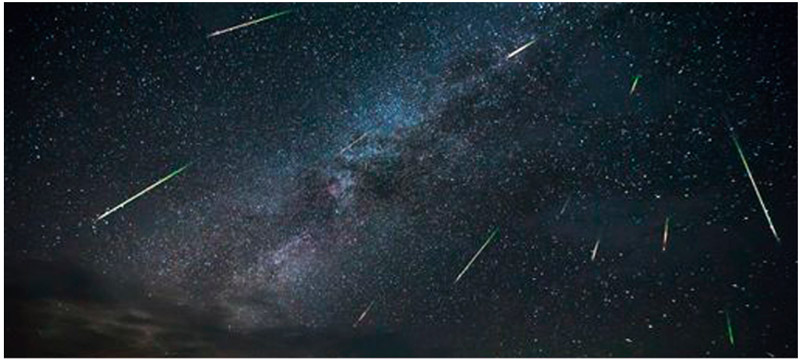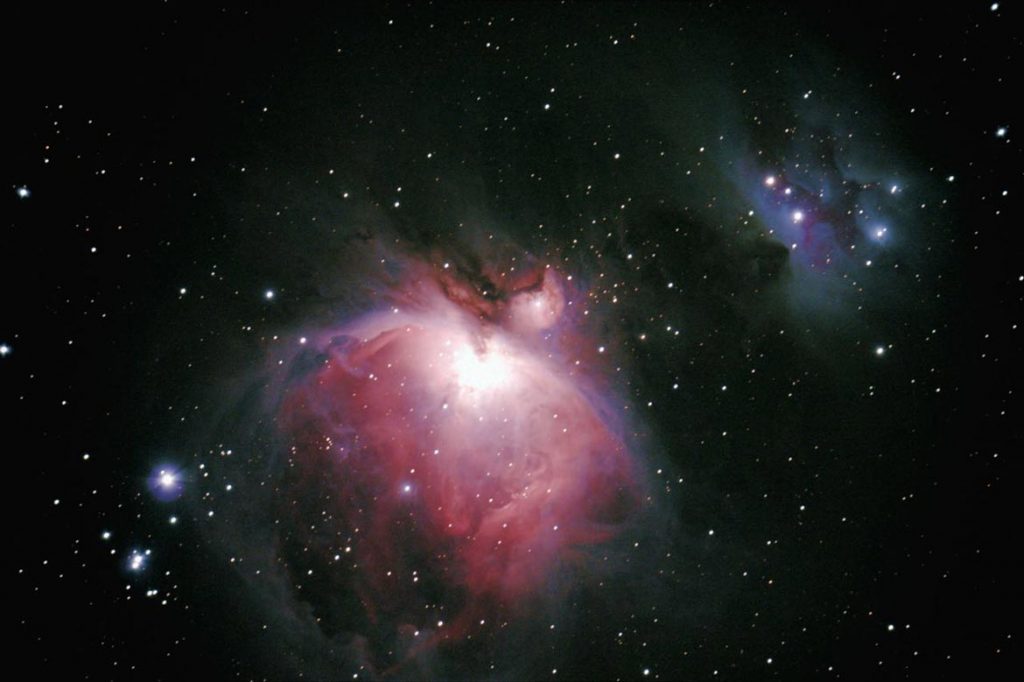Astronomical Ephemeris – October, 2022
Astronomical Ephemeris – October, 2022


They attract attention for their beauty and also because, somehow, they inspire people to seek knowledge – and self-knowledge. Eclipses, formed when the Moon is positioned between the Sun and Earth in a way that highlights light by creating shadow, have helped scientists unravel mysteries of the universe, such as the round shape of the Earth. And, in an analogy, they awaken in observers thoughts that usually involve the movement of shadow and light, what is hidden and what is apparent, the dark spots within each one that can be illuminated, and the points of light that can be reflected… In October, the Astronomical Ephemeris will have precisely one of those opportunities for observation and reflection.
On the 25th, between 8:58 and 13:00 (UTC time), a partial solar eclipse will occur. The New Moon will pass between the Sun and the Earth and the stars will be in an alignment that will favor the partial blockage of light, creating shadow in only a part of our planet. The phenomenon can be observed in parts of Europe, Russia and Greenland, in the extreme Arctic, North Africa, the Middle East and India.
. You should not wear sunglasses, veiled films or radiographs because they do not have the protection required for observing the eclipse.
. Binoculars, telescopes and cameras must be used with the use of filters suitable for this purpose.
. The phenomenon can be observed through a No. 14 or higher welder filter and for only 30 seconds, with one-minute pauses.
. The eclipse can be seen by projection. Use card stock with a needle or pin hole. Place another sheet nearby and observe the astronomical event.
For the total solar eclipse to occur, exact alignment of the celestial bodies is necessary, allowing the sunlight to be completely covered. This difference in alignment accuracy is due to the 5º tilt of the Moon’s orbital plane in relation to the Earth’s orbital plane. If this difference did not exist, we would have solar eclipses every month during the new phase of the Moon.
Eclipses are one of the most admired celestial phenomena. They show the perfect movement of the cosmos, a harmony that seems to favor the knowledge of one who awakened their mind.
Other observable astronomical events around the world
October 5 – Conjunction between the Moon and Saturn
Observable towards geographic west, in the constellation of Capricorn, from early evening.
October 8 – Conjunction between the Moon and Jupiter
Observable towards the geographic west, in the constellation Pisces, from early evening.
October 8 – Maximum Elongation of Mercury
Mercury can be observed just before sunrise, towards the geographic east, in the constellation Virgo.
October 15 – Conjunction between the Moon and Mars
Observable in the direction of geographic east, in the constellation of Taurus, during the dawn.
October 21 – Peak of the Orionid Meteor Shower
Active from October 2 to November 7, the Orionid meteor shower will peak on October 21. The phenomenon can be seen in an eastward direction throughout the night, when its radiant point, the constellation Orion, is highest in the sky.
It will be a medium-intensity shower, estimated to produce 10 to 20 fast meteors per hour (approximately 66 km/s), with a long, luminous trail that will streak across the sky for a few seconds. It has the identification of comet 1P/Halley as the parent body responsible for its creation.

Know more
Phenomenon that occurs when the planets Mercury and Venus
reach their greatest angular distance from the Sun, when viewed from Earth, that is,
when they are located in their best positions for observation both to the east (before
dawn) and to the west (in the early evening).
The phenomenon called “conjunction” occurs when the observer here on Earth has the apparent view that two or more celestial bodies are very close. This proximity between the celestial bodies, perceived by our eyes, without the help of equipment, is not real. They are actually very far apart.
October 2 – First Quarter
October 9 – Full Moon
October 17 – Last Quarter
October 25 – New Moon
Sources: jpl.nasa.gov/calendar/ | solarsystem.nasa.gov | in-the-sky.org| stellarium.org| earthsky.org | ov.ufrj.br | Jet Propulsion Laboratory (JPL): jpl.nasa.gov | IMO – International Meteor Organization | MAS – American Meteor Society | eclipse.gsfc.nasa.gov | timeanddate.com/eclipse | astrope.com.br| super.abril.com.br

The astronomical ephemeris are a monthly schedule prepared by the Astronomy Sector, which is one of
the 12 that make up the PRÓ-VIDA Laboratory Department. In the department, studies, research and scientific experiments related to various topics are developed, as well as field activities and lectures.

The astronomical ephemeris are a monthly schedule prepared by the Astronomy Sector, which is one of
the 12 that make up the PRÓ-VIDA Laboratory Department. In the department, studies, research and scientific experiments related to various topics are developed, as well as field activities and lectures.









